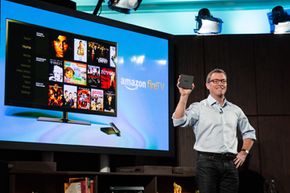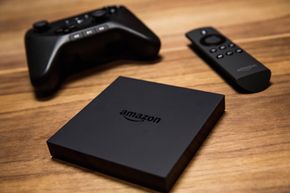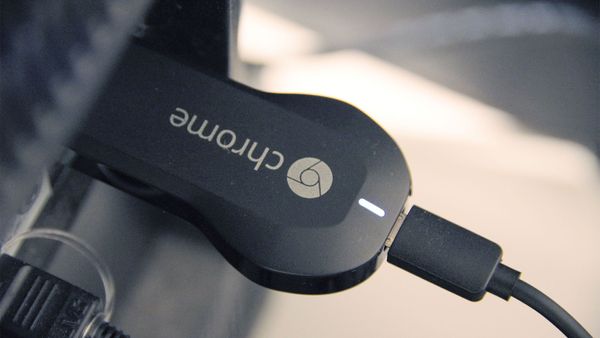Amazon Fire TV works a lot like Apple TV and Roku set-top boxes. The basic idea is simple: Using a remote control, you can make selections from on-screen menus featuring TV shows, movies and apps.
First, you need to set up the Amazon Fire TV. Luckily, this is very easy. When your package arrives from Amazon.com, you'll open it to find a small, square, black, plastic box, a remote control and a power cord. On the back of the box are ports for connecting it to your TV (HDMI) and to your home Internet connection (Ethernet). You have to supply your own cables. Amazon Fire TV is also WiFi-enabled, so you can connect to your home's WiFi network without the Ethernet cable [source: Amazon].
Simply connect the box to your TV using an HDMI cable and the box to your Internet modem using an Ethernet cable. (If you have WiFi, skip the latter step). Then plug in the power cord. There's no power button on the box. If it's plugged in, it's on [source: Amazon].
When you first turn on Amazon Fire TV, a welcome video will walk you through the basic features of the device and then on-screen prompts will help you connect to your WiFi network. If you are an Amazon Prime subscriber, your box will come preloaded with your information, so you can start watching (and buying) movies and shows immediately. Other users will have to input their credit card information and other personal data.
The home button on the remote takes you to the home screen, which shows your recently viewed items; featured movies, TV shows, apps, and games that Amazon thinks you might like; and lists of popular titles like new releases, recently added titles, top movies, and free games. On the left side of the home screen are links to additional menus for movies, TV, apps, games, and content you've already purchased in your video library.
You can navigate through these menus using the circular pad on the remote. To play games on Amazon Fire TV — the box ships with a handful of preloaded titles, including Minecraft — you can either use the remote or buy a separate wireless gaming controller for $40 [source: Amazon].
The niftiest feature of Amazon Fire TV is voice search. To search for a particular movie, TV show, actor or genre, just hold down the microphone button and say the word or phrase. Voice search seems to work great, but the big drawback is that it only produces results from Amazon's own catalog of streaming content. If a TV show or movie isn't available from Amazon, but is available through another streaming service like Netflix or Hulu Plus, it won't show up in the search results [source: Wood].




